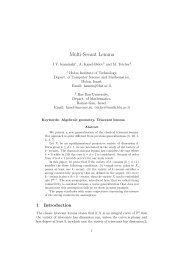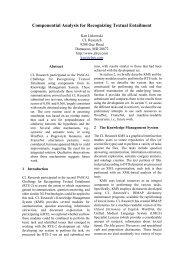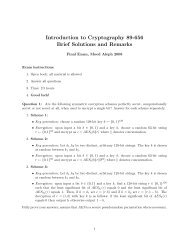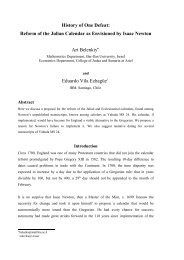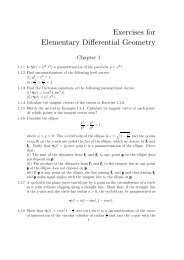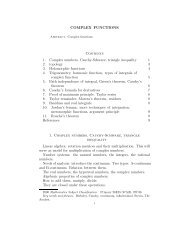Resolving Uncertainty: A Unified Overview of Rabbinic Methods
Resolving Uncertainty: A Unified Overview of Rabbinic Methods
Resolving Uncertainty: A Unified Overview of Rabbinic Methods
Create successful ePaper yourself
Turn your PDF publications into a flip-book with our unique Google optimized e-Paper software.
We might be able to reach a definitive answer regarding which is stronger, RDIK or<br />
RDLK, by explaining away one or the other set <strong>of</strong> pro<strong>of</strong>s. But to do so would be to<br />
answer the wrong question. To understand the crucial difference between RDIK and<br />
RDLK, let's recall the difference between the classical interpretation <strong>of</strong> probab ility<br />
and the frequentist interpretation.<br />
In the case <strong>of</strong> classical probability, the part that is left to judgment is rather limited.<br />
Typically, a rather straightforward sample space is taken for granted. Once that's<br />
taken care <strong>of</strong>, assigning a probability is a simple matter <strong>of</strong> calculation. (In fact, in the<br />
limited case <strong>of</strong> RDIK, the cases need only be counted.) In the case <strong>of</strong> frequentist<br />
probability, however, selecting a reference class and then estimating frequencies<br />
within the class requires a substantial investment <strong>of</strong> judgment. With what confidence<br />
can we assert that for some class A the event in question occurs with some<br />
sufficiently high frequency? Answering this question, even loosely, is inevitably a<br />
matter <strong>of</strong> judgment.<br />
The crucial difference, then, between RDIK and RDLK is that, while RDIK is a<br />
counting principle that can be applied on an ad hoc basis, every RDLK is a general<br />
statistical law that can only be applied if it has received <strong>Rabbinic</strong> sanction. Since<br />
RDLK is always a product <strong>of</strong> <strong>Rabbinic</strong> judgment, it stands to reason that this<br />
judgment is exercised variably. The apparent contradiction regarding the relative<br />
strengths <strong>of</strong> RDIK and RDLK simply reflects the fact that different applications <strong>of</strong><br />
RDLK are assigned different strengths (both in terms <strong>of</strong> the strengths <strong>of</strong> the laws<br />
themselves and in terms <strong>of</strong> the strength <strong>of</strong> the evidence for the laws). On the other<br />
hand, applications <strong>of</strong> RDIK, which do not – so to speak – pass through <strong>Rabbinic</strong><br />
hands, are all treated in a uniform manner.<br />
Consequently, if you've seen one RDIK you've seen them all. Unless there is some<br />
countervailing principle which prevents its application, RDIK is a decision procedure<br />
which resolves, but does not dispel, uncertainty in favor <strong>of</strong> the majority regardless <strong>of</strong><br />
whether p/q is .99 or .51. That is, in applying the principle <strong>of</strong> RDIK we acknowledge<br />
that there is uncertainty but the RDIK allows us to decide in favor <strong>of</strong> the majority<br />
much in the way that a majority vote settles a case in court. Invoking RDIK is not<br />
sufficient, however, to achieve the degree <strong>of</strong> certainty necessary to establish the facts<br />
<strong>of</strong> a capital case.<br />
Unlike RDIK, however, there are various types <strong>of</strong> RDLK. There are three types <strong>of</strong><br />
decision rules and, depending on <strong>Rabbinic</strong> judgment, RDLK can be any one <strong>of</strong> them.





